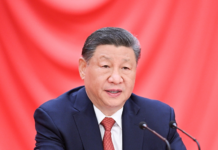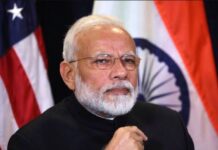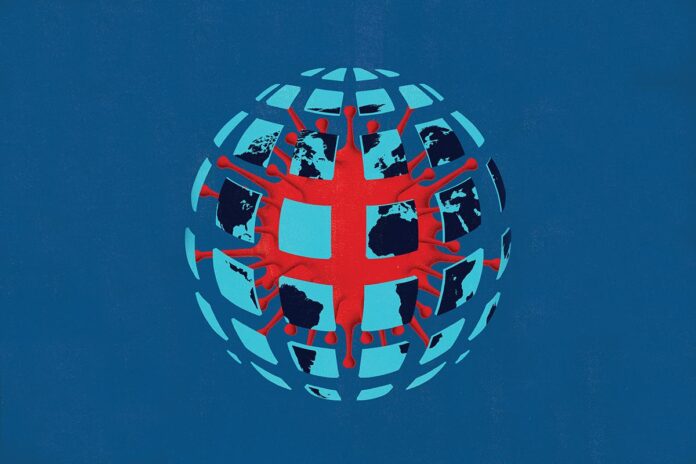At around 0540 hours GMT on March 23 last, a Panama-flagged 200,000-tonne 400-metre-long cargo container carrier MV Ever Given ran aground in the Suez Canal. It clogged one of the world’s busiest waterways. Longer than four football fields and wedged across the Egyptian-administered Canal, the vessel caused a traffic jam on both ends. The Ever Given, registered in Panama and operated by the shipping company Evergreen, was bound for the port city of Rotterdam in Netherlands. It commenced its sea voyage from China and was passing northwards through the Canal on its way to the Mediterranean Sea. The Suez Canal supports over 12 per cent of global trade and provides the shortest link between Asia and Europe. It is a 205 metre-wide Canal with a depth of 24 metres. On an average, 51 ships transit the 120 mile long passage every day.
The Ever Given incident was nothing short of a nightmare for a world reeling from the crippling economic pain imposed by the covid-19 pandemic. By March 27 the blocking of the international waterway had caused the amassing of over 300 ships at both ends of the Suez Canal. The jam delayed vital cargo consignments to various international destinations. Of particular importance were oil and liquefied natural gas shipments from the Middle East to Europe. In the process, Egypt was losing between $12-14 million in revenue each day. Lloyd’s list said ‘the blockage was holding up an estimated $9.6 billion worth of cargo every day between Asia and Europe’.
The alternate choice for shipping sans Suez is long, expensive and tedious voyage. It involves a detour of some 8900 km round the Cape of Good Hope on the southern tip of Africa. The entire episode was a reminder of powerful words of 19th century American naval officer and historian Alfred Mahan. He described the sea as a “great highway”, a “wide commons” with several “chokepoints”, control of which contributed to Great Britain’s command of the seas.
His emphasisis was that the ‘significance of sea power lies in its ability to control sea lanes, as well as the critical geographical nodes that can facilitate or impede the flow of commercial and naval shipping.’ Indeed, for much of human history, narrow maritime passages and chokepoints (nodes) have been the most contested battlegrounds for control and dominance. Much against Mackinder’s heartland theory, for Mahan, “control of sea equalled command of the world”.
The Maritime Doctrine of Pakistan issued by the Pakistan Navy in December 2018 identifies four critically important access waterways (chokepoints): the Suez Canal (Egypt), Bab-el-Mandeb (Djibouti-Yemen), the Strait of Hormuz (Iran-Oman), and the Strait of Malacca (Indonesia-Malaysia). The fate of the world power politics and security in this century will largely hinge on these four critical geographic nodes.
Since the 1980s, globalisation has led to increasing interdependency and interconnectivity. In terms of both value and volume, over 90 percent of the intercontinental cargo is transported today via sea underpinned by well-established sea lanes (maritime highways, quickest and most economical routes between two points). The bulk of this cargo is shipped in containers which come in standard sizes of 20-foot and 40-foot called TEUs (Tonnes Equivalent Units). Over the past two decades there has been an exponential increase in the number of containers that could be loaded on commercial ships (largest up to 24,000 TEUs).
Ever Given had the capacity to carry nearly 20,000 20-foot containers. Globalisation has greatly enhanced diversification with supply chains running across the world. IPhone for instance, relies on Apple’s manufacturing network. It straddles 49 countries; Pfizer a vaccine champion has over 500 suppliers. All these operations are supply chain dependent. Supply chains are dependent on world shipping.
Yet the world has lately witnessed some terribly unpredictable consequences of globalization. Global sea commerce got severely disrupted as the coronavirus pandemic struck. The majority of the sea consignments arrived late at destinations as more and more crew on board large and small commercial ships fell victim to pandemic. Port workers across the world got infected slowing down processing of inter-modal (sea to land and vice versa) transportation. Scores of ships with laden cargo, fossil fuels and other goods waited at anchorages.
More recently, containerised trade has seen record high rates caused by the covid-19 pandemic and subsequent shuttering of large parts of the global economy. And of course, we lately had the incident of Ever Green. All this has been enough to send tremors in world economic capitals.
Globalization had led mankind to think the world has moved beyond the savagery of war. On the contrary globalization has heightened rivalries. From Yemen and Sudan to Iraq and Afghanistan, to Ukraine, the world is fraught with perils.
Will globalization survive another pandemic? Is the world inching towards reduced dependency and rolling back the vast network of supply chains? These and similar questions will continue to be debated in times ahead. But what ought to be remembered is this: the Maritime Doctrine of Pakistan issued by th Pakistan Navy in December 2018 identifies four critically important access waterways (chokepoints): the Suez Canal (Egypt), Bab-el-Mandeb (Djibouti-Yemen), the Strait of Hormuz (Iran-Oman), and the Strait of Malacca (Indonesia-Malaysia). The fate of the world power politics and security in this century will largely hinge on these four critical geographic nodes.























